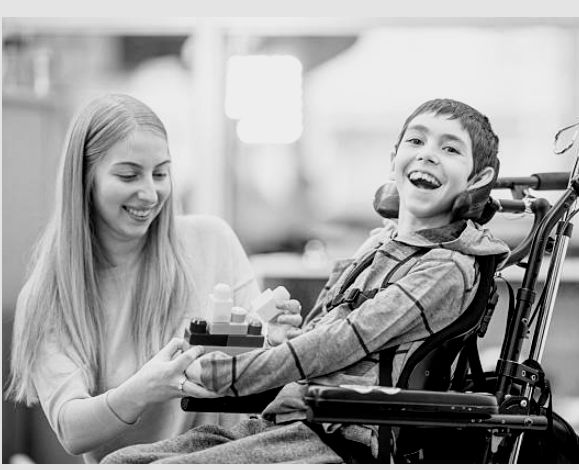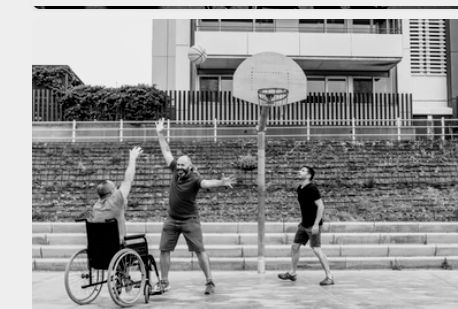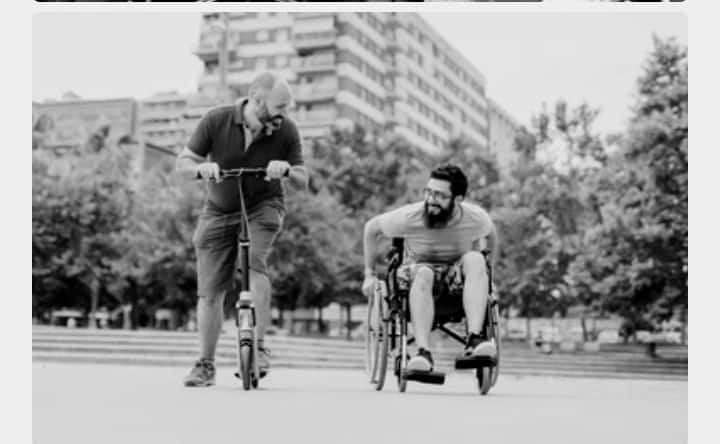For centuries, society has viewed disability through a narrow lens, often equating it with weakness or inability. However, this perception is not only inaccurate but also limiting. The phrase “disability is not inability” emphasizes that people with disabilities are not inherently incapable; rather, they may accomplish tasks in different ways or excel in areas unrelated to their disability. With proper support, understanding, and inclusivity, people with disabilities can thrive, contribute, and succeed in all areas of life. This article explores the distinction between disability and inability, challenges societal misconceptions, and highlights the potential of individuals with disabilities to achieve extraordinary things.

Understanding Disability.
Disability refers to a wide range of physical, intellectual, sensory, or mental conditions that may affect an individual’s ability to perform certain activities or participate in specific environments. According to the World Health Organization (WHO), over one billion people globally live with some form of disability, making them one of the largest minority groups in the world. Disabilities can be visible or invisible, temporary or permanent, and affect people of all ages and backgrounds. However, it is important to recognize that having a disability does not mean an individual is unable to live a fulfilling, productive life.The distinction between disability and inability is essential.
Inability
refers to a lack of capacity to perform a task, but this is often specific and context-dependent. For example, someone may be unable to play a musical instrument, but this does not define their overall abilities or potential. Disability, on the other hand, refers to a condition that might require adaptations or accommodations but does not imply the absence of ability. Many people with disabilities excel in areas unrelated to their condition and can thrive when provided with accessible environments and the necessary tools.
Challenging Misconceptions : The misconception that people with disabilities are incapable or dependent stems from long-standing societal prejudices. Historically, disability has been framed through the “medical model,” which views it as a defect or abnormality that must be cured or managed. This approach leads to pity, exclusion, and marginalization of individuals with disabilities, as they are often seen as less capable than their non-disabled peers. In contrast, the social model kiof disability argues that individuals are disabled not by their impairments but by societal barriers that prevent their full participation. These barriers can be physical, such as inaccessible buildings, or attitudinal, such as negative stereotypes and discrimination. When society creates inclusive spaces—through ramps, braille signage, assistive technology, or flexible working conditions—people with disabilities can participate fully in all aspects of life, from education and employment to social and cultural activities.
For example, a person who uses a wheelchair is not inherently unable to work, study, or engage in their community. However, if a workplace lacks accessible entrances or facilities, this creates a barrier to their participation. Similarly, a person with a hearing impairment is not unable to communicate but may need assistive devices or sign language interpretation to engage in conversations. The problem lies not in their ability but in societal structures that fail to accommodate their needs

Success Stories: Disability as Strength There are countless examples of individuals with disabilities excelling in various fields and demonstrating that disability is not inability. In sports, athletes like Oscar Pistorius and Tatyana McFadden have broken world records, proving that physical disability does not limit athletic excellence. In the arts, individuals like Beethoven, who continued to compose music even after losing his hearing, show how creativity can flourish regardless of disability.In business and leadership, people with disabilities have risen to prominence, shattering stereotypes about their capabilities. For example, Richard Branson, the founder of Virgin Group, has dyslexia, a learning disability that affects reading and writing.
Despite this challenge, Branson has built a global business empire and is recognized as one of the most successful entrepreneurs in the world. His success highlights how focusing on strengths rather than limitations is crucial to unlocking human potential.These stories reinforce the idea that disability is not a limitation of a person’s ability to achieve; instead, it reflects the diversity of human experience. When provided with opportunities and a supportive environment, people with disabilities can thrive and contribute to society in ways that are often unexpected and inspiring.
Inclusivity : The Key to Unlocking PotentialCreating inclusive environments is essential to breaking down barriers and enabling people with disabilities to participate fully in society. Inclusivity involves more than just physical accessibility—it means changing attitudes, removing stigmas, and offering support systems that allow everyone to succeed.In the realm of education, for example, inclusive classrooms allow students with disabilities to learn alongside their non-disabled peers, fostering mutual understanding and respect. Assistive technologies, such as speech-to-text software, braille displays, and adaptive learning tools, can help bridge the gap between ability and disability, ensuring that all students have access to the resources they need to succeed.In the workplace, companies that prioritize diversity and inclusivity are often more innovative and productive. By hiring people with disabilities, businesses benefit from diverse perspectives, problem-solving approaches, and creativity.
Additionally, workplace accommodations such as flexible schedules, accessible technology, and supportive policies can ensure that employees with disabilities thrive and contribute meaningfully to their teams.Governments also play a critical role in fostering inclusivity through policies and legislation that protect the rights of people with disabilities. Laws like the Americans with Disabilities Act (ADA) in the United States and similar frameworks around the world aim to eliminate discrimination and ensure equal opportunities in employment, education, and public life. These legal protections, when effectively enforced, help create an environment where disability does not hinder participation or achievement.

Conclusion.
“Disability is not inability” is a powerful reminder that individuals with disabilities possess unique strengths, talents, and potential that often go unrecognized due to societal barriers and misconceptions. By understanding that disability does not equate to a lack of ability, society can move toward a more inclusive and supportive future where everyone, regardless of their physical or mental condition, can thrive. Whether in education, the workplace, or daily life, removing barriers and changing attitudes will allow people with disabilities to reach their full potential, proving that ability comes in many forms.




